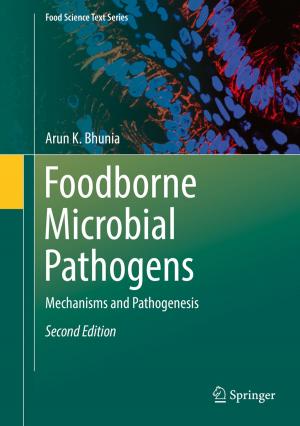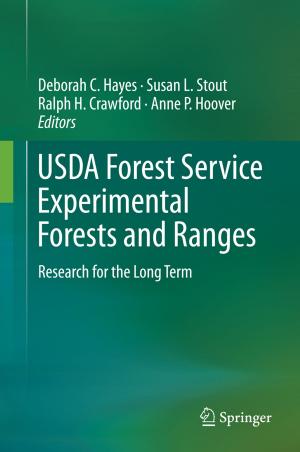Phytohormones: A Window to Metabolism, Signaling and Biotechnological Applications
Nonfiction, Science & Nature, Science, Biological Sciences, Botany| Author: | ISBN: | 9781493904914 | |
| Publisher: | Springer New York | Publication: | April 1, 2014 |
| Imprint: | Springer | Language: | English |
| Author: | |
| ISBN: | 9781493904914 |
| Publisher: | Springer New York |
| Publication: | April 1, 2014 |
| Imprint: | Springer |
| Language: | English |
Abiotic and biotic stresses adversely affect plant growth and productivity. The phytohormones regulate key physiological events under normal and stressful conditions for plant development. Accumulative research efforts have discovered important roles of phytohormones and their interactions in regulation of plant adaptation to numerous stressors. Intensive molecular studies have elucidated various plant hormonal pathways; each of which consist of many signaling components that link a specific hormone perception to the regulation of downstream genes. Signal transduction pathways of auxin, abscisic acid, cytokinins, gibberellins and ethylene have been thoroughly investigated. More recently, emerging signaling pathways of brassinosteroids, jasmonates, salicylic acid and strigolactones offer an exciting gateway for understanding their multiple roles in plant physiological processes.
At the molecular level, phytohormonal crosstalks can be antagonistic or synergistic or additive in actions. Additionally, the signal transduction component(s) of one hormonal pathway may interplay with the signaling component(s) of other hormonal pathway(s). Together these and other research findings have revolutionized the concept of phytohormonal studies in plants. Importantly, genetic engineering now enables plant biologists to manipulate the signaling pathways of plant hormones for development of crop varieties with improved yield and stress tolerance.
This book, written by internationally recognized scholars from various countries, represents the state-of-the-art understanding of plant hormones’ biology, signal transduction and implications. Aimed at a wide range of readers, including researchers, students, teachers and many others who have interests in this flourishing research field, every section is concluded with biotechnological strategies to modulate hormone contents or signal transduction pathways and crosstalk that enable us to develop crops in a sustainable manner. Given the important physiological implications of plant hormones in stressful environments, our book is finalized with chapters on phytohormonal crosstalks under abiotic and biotic stresses.
Abiotic and biotic stresses adversely affect plant growth and productivity. The phytohormones regulate key physiological events under normal and stressful conditions for plant development. Accumulative research efforts have discovered important roles of phytohormones and their interactions in regulation of plant adaptation to numerous stressors. Intensive molecular studies have elucidated various plant hormonal pathways; each of which consist of many signaling components that link a specific hormone perception to the regulation of downstream genes. Signal transduction pathways of auxin, abscisic acid, cytokinins, gibberellins and ethylene have been thoroughly investigated. More recently, emerging signaling pathways of brassinosteroids, jasmonates, salicylic acid and strigolactones offer an exciting gateway for understanding their multiple roles in plant physiological processes.
At the molecular level, phytohormonal crosstalks can be antagonistic or synergistic or additive in actions. Additionally, the signal transduction component(s) of one hormonal pathway may interplay with the signaling component(s) of other hormonal pathway(s). Together these and other research findings have revolutionized the concept of phytohormonal studies in plants. Importantly, genetic engineering now enables plant biologists to manipulate the signaling pathways of plant hormones for development of crop varieties with improved yield and stress tolerance.
This book, written by internationally recognized scholars from various countries, represents the state-of-the-art understanding of plant hormones’ biology, signal transduction and implications. Aimed at a wide range of readers, including researchers, students, teachers and many others who have interests in this flourishing research field, every section is concluded with biotechnological strategies to modulate hormone contents or signal transduction pathways and crosstalk that enable us to develop crops in a sustainable manner. Given the important physiological implications of plant hormones in stressful environments, our book is finalized with chapters on phytohormonal crosstalks under abiotic and biotic stresses.















